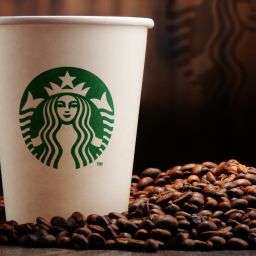
The journey to a perfect cup of coffee begins long before the brewing process, starting with the selection and grinding of coffee beans. The importance of using fresh, properly ground coffee cannot be overstressed. Grinding coffee beans just before brewing maintains their full flavor and aroma, ensuring a superior taste experience.
This initial step is crucial, as it directly impacts the extraction process, where water interacts with coffee grounds to draw out the flavors and oils that give coffee its unique character.
The Science of Coffee Grinding
Grind size plays a pivotal role in the coffee brewing process, significantly affecting the taste and quality of the final cup. A finer grind increases the surface area exposed to water, enhancing extraction but risking over-extraction, which can lead to bitterness. Conversely, a coarser grind reduces the surface area, potentially under-extracting the coffee and resulting in a weak, underwhelming flavor.
The ideal grind size varies depending on the brewing method; for example, espresso requires a fine grind to achieve its characteristic concentration and crema, while French press coffee is best with a coarse grind to prevent sediment in the cup. Adjusting grind size allows for precise control over extraction, balancing acidity, sweetness, and bitterness to achieve the desired flavor profile.
Blade vs. Burr Grinders
The choice between blade and burr grinders is a crucial consideration for any coffee enthusiast seeking the optimal grind consistency and flavor. Blade grinders, often more affordable, use a spinning blade to chop coffee beans, resulting in an inconsistent grind that can compromise the coffee’s taste. This method also generates heat, risking the loss of delicate flavors and aromas during the grinding process.
In contrast, burr grinders employ two revolving abrasive surfaces (burrs) to grind the coffee beans into a consistent size. This method offers superior control over grind size and uniformity, directly influencing the coffee’s extraction and, ultimately, its taste.
Burr grinders are preferred for their ability to produce a uniform grind, essential for achieving the best possible flavor from the coffee beans. The even grind size ensures balanced extraction, reducing the risk of over-extracting or under-extracting the coffee, which can lead to bitterness or weak flavor, respectively.
Choosing between blade and burr grinders depends on one’s priorities: budget, convenience, and the desired quality of the coffee. For those seeking to elevate their coffee experience, investing in a burr grinder is a step towards crafting the perfect cup, with each grind tailored to the specific demands of the chosen brewing method.
How to Grind Coffee
Choosing the Right Grind Size
Selecting the appropriate grind size is critical for optimizing the extraction process and achieving the desired flavor profile in your coffee. The grind size affects the surface area exposed to water, influencing the brewing time and extraction rate. Here’s a simplified guide to help you match grind size with brewing methods:
- Extra Coarse: Ideal for cold brew coffee, resembling peppercorns.
- Coarse: Best for French press and percolator, similar to sea salt.
- Medium-Coarse: Suitable for Chemex brewers, resembling rough sand.
- Medium: Perfect for drip coffee makers and siphon coffee, similar to regular sand.
- Medium-Fine: Great for pour-over cones and vacuum pots, slightly finer than sand.
- Fine: Used for espresso and AeroPress (short brew time), finer than table salt.
- Extra Fine: Necessary for Turkish coffee, powdery like flour.
Adjusting grind size allows for control over the brewing process, balancing extraction to avoid over or under-extracting coffee, which can lead to bitterness or a weak flavor.
Step-by-step guide to grinding coffee
- Measure Your Coffee Beans: Use a 1:15 coffee-to-water ratio for a balanced extraction. Adjust according to taste and brewing method.
- Select Grind Size: Choose based on the brewing method. Fine-tune based on taste preference and coffee strength.
- Fill Your Grinder: For burr grinders, load the hopper. For blade grinders, add beans to the chamber.
- Grind: Operate your grinder according to its settings for your selected grind size. Burr grinders will provide a consistent size, while blade grinders may require pulsing and shaking for an even grind.
Advanced Grinding Techniques
For coffee enthusiasts seeking to perfect their grind, consider these advanced techniques:
- Accurately Measuring Beans: Always use a scale to ensure consistency in coffee strength and flavor.
- Purging Grinders: Especially with automatic grinders, purge after adjusting settings to ensure grind consistency. This removes any remnants from previous grinds.
- Dialing in Espresso: Experiment with grind size to achieve the perfect espresso shot, adjusting based on the coffee’s weight, shot timing, and taste.
The Importance of Freshness in Coffee Grinding
Grinding coffee beans fresh is paramount for capturing the full spectrum of flavors and aromas inherent in the beans. Once ground, coffee begins to oxidize, leading to a loss of complexity and depth in flavor. By grinding beans just before brewing, you ensure that the coffee’s essential oils and aromatic compounds are preserved, enhancing the overall taste experience.
This practice also allows for adjustments in grind size to suit individual taste preferences and brewing methods, further elevating the quality of the coffee produced. Freshly ground coffee offers a superior taste profile compared to pre-ground options, making it a critical step for enthusiasts and professionals alike in the pursuit of the perfect cup.
FAQs
When is the best time to grind coffee beans?
The optimal time to grind coffee beans is just before brewing. This ensures the freshest flavor by minimizing the time between grinding and extraction, which preserves the beans’ essential oils and aromatic compounds.
How should I store my coffee beans?
Store whole coffee beans in an airtight container in a cool, dark place. Avoid exposure to air, light, and moisture, which can degrade the beans’ quality and flavor. Grinding coffee beans just before use also helps maintain their freshness.
What maintenance does my grinder need?
Regular maintenance of your coffee grinder is essential for its longevity and performance. Clean your grinder after each use to remove coffee oils and residue. For burr grinders, disassemble and clean the burrs according to the manufacturer’s instructions, usually every few weeks to months, depending on use.
Conclusion
Summarizing the importance of grinding coffee beans, the act significantly impacts coffee quality, freshness, and the ability to customize taste. Grinding beans immediately before brewing maximizes flavor and aroma, offering a superior coffee experience tailored to individual preferences.




